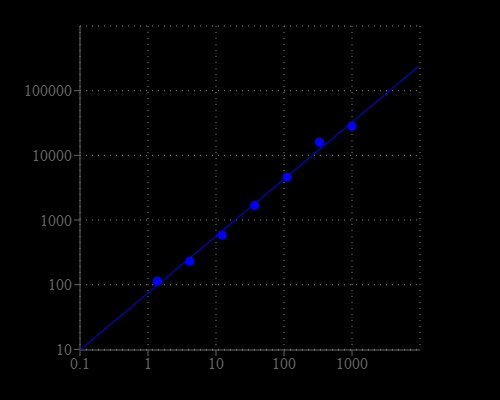Amplite® Fluorimetric Alanine Aminotransferase Assay Kit
Alanine aminotransferase (ALT), also called serum glutamate pyruvic transaminase (GPT), is a member of transferase family. It catalyzes the reversible transfer of an alpha-amino group between alanine and glutamate, and is an important enzyme in amino acid metabolism. ALT is found mainly in liver and small amount in heart, muscle, and kidneys. In healthy subjects, serum ALT levels are low. However, when cells are damaged, such as acute and chronic hepatitis, obstructive jaundice, carcinoma of liver, myocardial infarction, ALT may leak into the blood stream and the ALT levels are significantly elevated. Therefore, determination of serum ALT level has great clinical and diagnostic significance. Amplite® Fluorimetric Alanine Aminotransferase Assay Kit provides a quick and sensitive method for the measurement of ALT in various biological samples. ALT catalyzes the reaction of alanine and α-ketoglutarate to pyruvate and glutamate. The product glutamate is measured by the generation of a red fluorescent product through an enzyme coupled reaction cycle. The signal can be read by a fluorescence microplate reader. With the Amplite® Fluorimetric Alanine Aminotransferase Assay Kit as little as 4 mU/mL ALT was detected in a 100 µL reaction volume. The assay is robust, and can be readily adapted for a wide variety of applications.


| Catalog | Size | Price | Quantity |
|---|---|---|---|
| 13802 | 200 Tests | Price |
Storage, safety and handling
| H-phrase | H303, H313, H333 |
| Hazard symbol | XN |
| Intended use | Research Use Only (RUO) |
| R-phrase | R20, R21, R22 |
| UNSPSC | 12352200 |
Instrument settings
| Fluorescence microplate reader | |
| Excitation | 540 nm |
| Emission | 590 nm |
| Cutoff | 570 nm |
| Recommended plate | Solid black |
Contact us
| Telephone | |
| Fax | |
| sales@aatbio.com | |
| International | See distributors |
| Bulk request | Inquire |
| Custom size | Inquire |
| Technical Support | Contact us |
| Request quotation | Request |
| Purchase order | Send to sales@aatbio.com |
| Shipping | Standard overnight for United States, inquire for international |
Page updated on January 21, 2026
